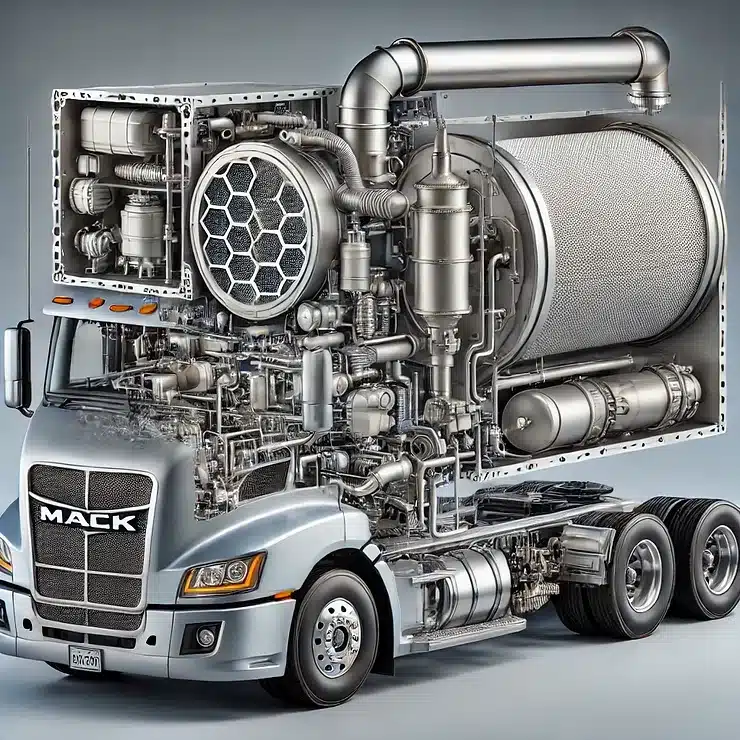The Frustrations of After-Treatment Systems in Tractor Units
After-Treatment System Problems in Tractor Units
Last updated: • Guide for owner-operators & fleet managers

After-treatment issues are among the most expensive and disruptive problems for Class-8 tractors. These systems keep you compliant, but failures can force derates, limp mode, or roadside tows. Use this guide to spot symptoms early, understand costs, and prevent repeat failures.
🔧 Common After-Treatment System Problems
- Frequent DPF regens: Excessive or failed regens point to restricted airflow, leaking charge pipes, or faulty sensors—driving up fuel burn.
- Sensor failures: NOx, differential-pressure, and temp sensors misreport data, tripping SPN/FMI codes and forcing derates.
- Clogged filters: Loaded DOC/DPF increases backpressure, stresses the turbo, and can crack substrates.
- DEF system faults: Crystallized lines, contaminated DEF, weak pumps, and stuck dosers create SCR efficiency errors.
⚠️ Early Warning Symptoms
- More frequent parked regens or failed regen attempts
- Strong ammonia/chemical smell near the stack
- Drop in fuel economy or sluggish throttle response
- Intermittent check-engine & amber DEF lamp cycling on hills
💸 Repair Costs & Common Replacement Parts
| Component | Typical Cost (Parts) | Notes |
|---|---|---|
| NOx sensors (up/downstream) | $300–$800 each | Often fail in pairs; replace with latest OEM revision. |
| DPF (exchange or new) | $2,000–$8,000 | Clean/exchange when possible; verify ash load & backpressure. |
| DEF pump & doser/injector | $500–$1,500 | Contamination & crystal build-up are common failure points. |
| Aftertreatment control module | $1,000–$3,000 | Requires programming; check harness & grounds first. |
Prices reflect U.S. spot ranges; labor & programming vary by engine family (PACCAR, Cummins, Detroit, Volvo/Mack, etc.).
✅ Best Practices to Reduce Downtime
Use Certified DEF
Buy sealed, API-certified DEF only. Store away from heat/sun; replace jugs older than 12 months.
Schedule Preventive Service
DPF clean every 100k–150k miles (duty-cycle dependent). Inspect clamps, V-bands, and flex sections.
Monitor Codes Early
Interrogate soft codes before a derate. Document SPN/FMI history; update ECM/ACM software when available.
Flush the DEF Circuit
Periodic line/doser cleaning reduces crystal formation and restores spray pattern & dosing accuracy.
Driver Checklist Before You Tow
- Check for exhaust leaks upstream of DPF/SCR.
- Confirm fuel/water separator is drained and air filter is clear.
- Verify DEF level & quality; cycle key and attempt a parked regen (safe area only).
🔍 Why the NOx Sensor Triggers Chain Failures
NOx sensors feed the ACM closed-loop control. A drifting upstream sensor can falsely report high emissions, causing the ECM to over-dose DEF, flag low SCR efficiency, and command regens that never resolve the root issue. Replace only after verifying grounds, harness integrity, and proper exhaust temperature profile; if one NOx unit fails, inspect the pair and update calibrations to the newest part number.
Need a dispatch partner that understands downtime risk and works to keep you rolling?
🔧 See How Freight Girlz Keeps Trucks MovingFAQs
How often should I clean the DPF?
Most highway tractors benefit from a professional clean every 100k–150k miles, sooner for heavy-idle or short-haul duty cycles.
Can bad DEF ruin the system?
Yes. Contaminated or out-of-spec DEF crystalizes, clogs the doser, damages the pump, and triggers SCR efficiency codes.
Do I need dealer programming after parts swap?
Often. NOx sensors, ACMs, and some pumps require calibration, resets (e.g., inducement counters), and software updates.
© Freight Girlz. All rights reserved.